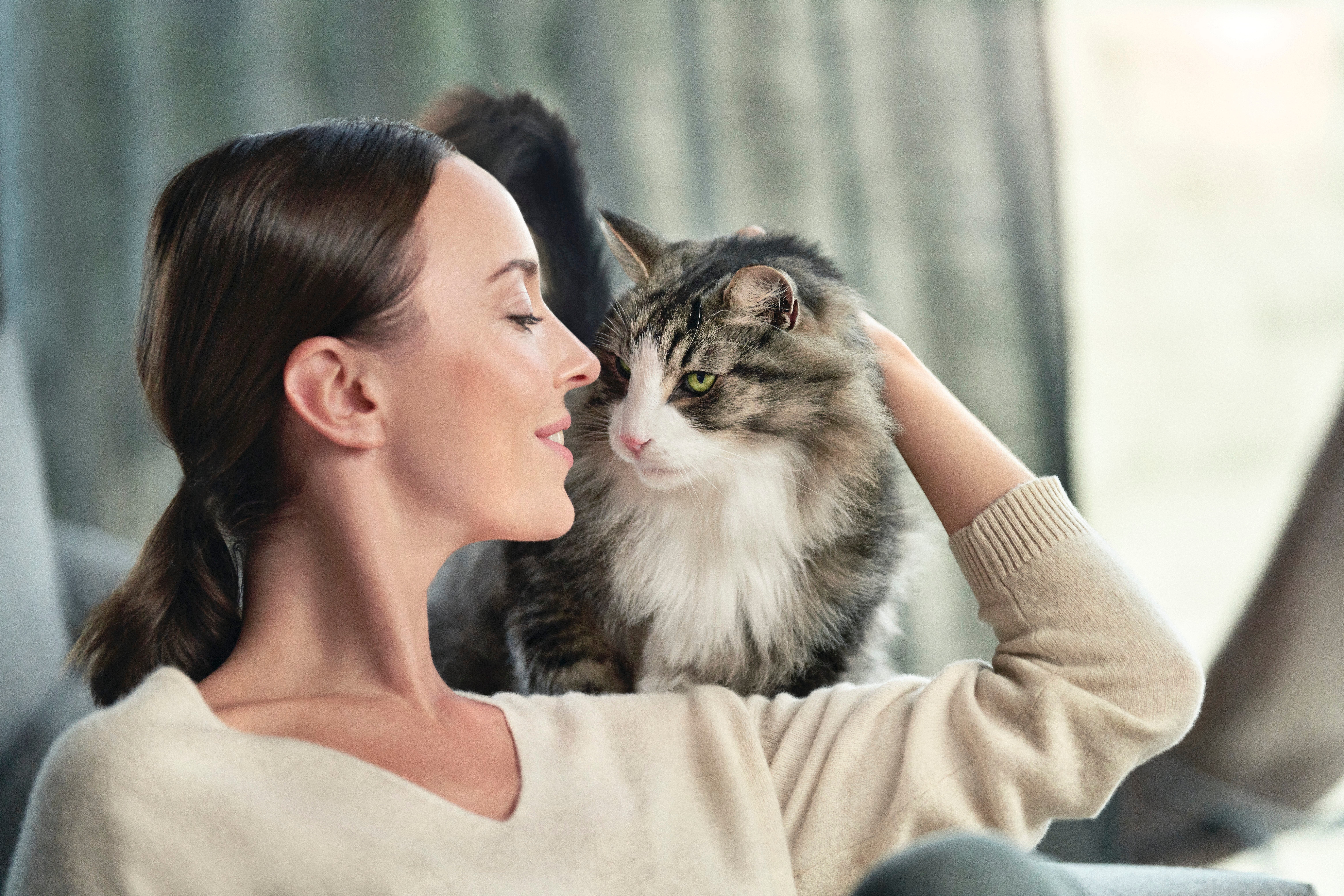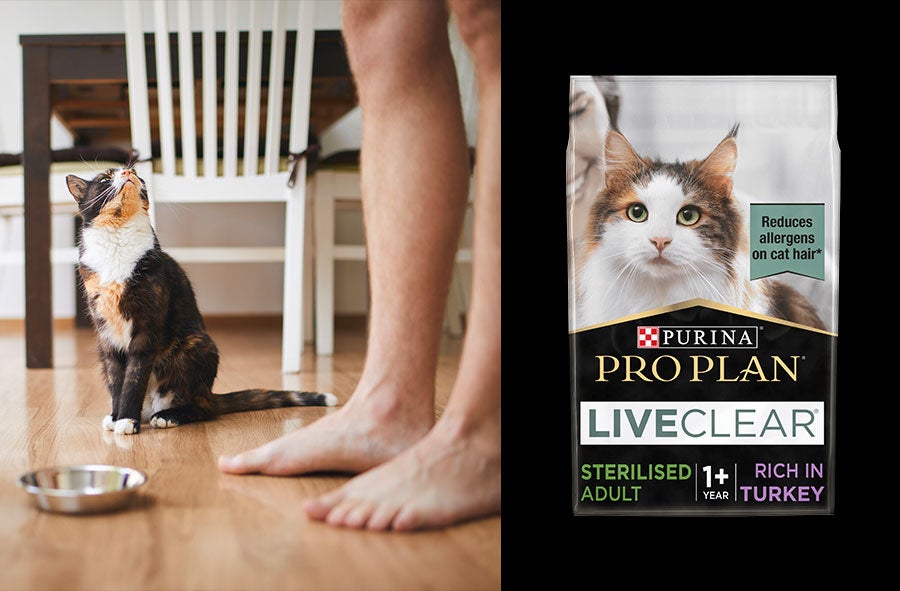Clear the Air: neutralising cat allergens through nutrition
Here in the UK, we’re a nation of animal lovers. In 2022, 38 million pets were living in the UK, with 57% of households having a furry or feathered friend. But there is something stopping people from taking on a feline or canine companion, and that’s allergies to pets.

Allergies to pets are triggered by specific proteins found in the saliva and urine of pets, and 10 to 20% of the worldwide population are affected, leading to symptoms like coughing, sneezing, and skin rashes.
Is it fair that people with allergies miss out on the fun, love, and companionship that furry family members bring? And what about those moving into or regularly visiting a household that already has pets? Fortunately, breakthroughs in pet nutrition mean that people with pet allergies may be able to consider a new pet or enjoy spending time with their existing pets.

Understanding pet allergens
It’s a common misconception that people allergic to pets are allergic to their hair. But the hair itself isn’t the allergen. Instead, it’s a protein that’s found mainly in their saliva, along with urine and some oil glands in their skin. Because of their grooming and toileting habits, combined with normal shedding of dead skin cells, pet hairs become coated with this protein, which is how the allergen spreads into the environment. In cats, the primary allergen is the protein Fel d 1.
Understanding the true allergen associated with pet allergies explains why choosing a cat who is low-shedding doesn’t necessarily improve your symptoms. Despite the ubiquity of the term, a ‘hypoallergenic cat’ does not exist. All cats produce Fel d 1, to varying extents. Although fewer pet hairs around your home is a good thing from an allergy perspective, you’ll still be exposed to the allergen through contact with your cat and the soft furnishings and surfaces where they’ve been. Because the protein will be among the dead skin cells and hair floating in the air, it’s hard to avoid it.
The impact of allergies on pet owners
The symptoms associated with pet allergies include coughing, sneezing, wheezing, skin rashes, hives, and in severe cases, anaphylaxis. Measures like regular hoovering, washing soft furnishings, and using air purifiers can help reduce the amount of allergens in your home.
However, if you live with a cat, it’s a constant battle to keep your symptoms under control. Many people with allergies will choose not to get a cat, but with friends and family, new relationships, and even housing arrangements, it’s not easy to completely avoid them. Those who choose to keep their cat despite their allergies often need to restrict their contact with their pet to reduce their symptoms, but still experience skin rashes and breathing difficulties despite their best efforts.
Nutritional approaches to reducing pet allergens
Modifying your cat’s diet to keep their skin as healthy as possible could also reduce pet allergens since inflamed or irritated skin sheds more cells, especially when your pet scratches. Omega-3 fatty acids are a natural anti-inflammatory, keeping the skin barrier healthy and reducing irritation, scratching, and dander.
Another nutritional approach is to target the allergen protein so it doesn’t trigger an allergic response. In this case you can try Purina PRO PLAN LiveClear cat food, it is the first and only cat food to help manage pet allergens. When cats eat LiveClear, a specific protein sourced from eggs binds to the Fel d1 and safely neutralises it.
Neutralising the allergen in this way helps reduce exposure to the active allergen in people who suffer from cat allergies. When fed daily, LiveClear reduces the allergens on cat hair by an average of 47%, starting from 3 weeks*. Combining this nutritional approach, where LiveClear is the cat’s primary source of food each day, with other allergen management methods, means cat owners with allergies could enjoy more loving time with their cats without worries or restrictions.

PRO PLAN LIVECLEAR
The world’s first and only cat allergen-reducing food
After a decade of research PURINA has discovered a breakthrough in nutrition, identifying a specific protein in eggs that can safely neutralise Fel d1, the major allergen on cat hair. LIVECLEAR is a revolutionary cat food proven to reduce allergens on cat hair and dander by an average of 47%, starting from the 3rd week of daily feeding*.
Click here to discover more information on LIVECLEAR



